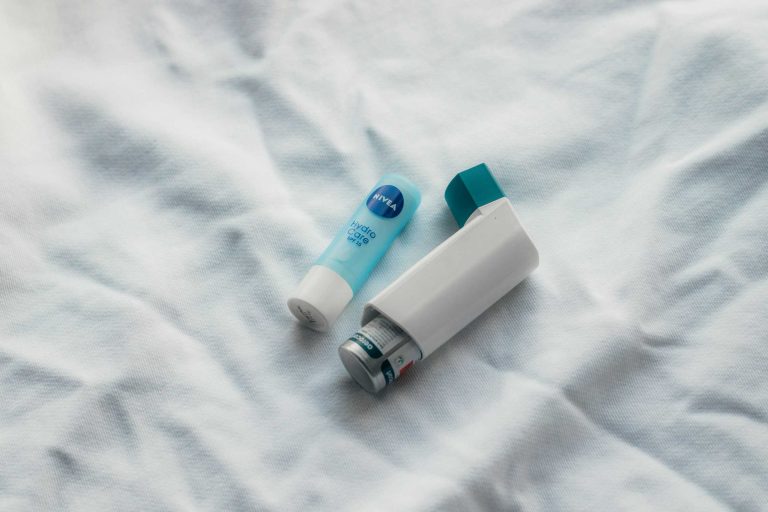Inhaled corticosteroids (ICS)
Inhaled corticosteroids, also known as glucocorticoids or corticosteroids, usually start to take effect within a few weeks. These medicines are crucial for people with asthma, as they help reduce inflammation in the airways. By using the inhaler daily, the lining of the airways can recover, lowering the risk of asthma attacks.
Tip!
Always rinse your mouth and gargle after using a corticosteroid inhaler. This helps prevent hoarseness, irritation, and fungal infections in the mouth and throat.
Combination inhalers (ICS + FABA)
New guidelines for asthma care recommend combination inhalers. These inhalers contain both anti-inflammatory medication and a fast-acting bronchodilator.
Combination inhalers start working within a few minutes and can last for 4-12 hours. Using this inhaler daily helps reduce inflammation, and it can also be used as needed for quick relief when symptoms arise. Often, you’ll feel an immediate effect as the airways expand, making it easier to breathe.
Fast-acting bronchodilators
Active ingredients: Salbutamol, terbutaline, or formoterol.
These inhalers work within a few minutes and last for 4-12 hours. They are used to relieve acute asthma attacks and can also be taken preventatively before physical activity. By binding to beta-2 receptors in the airways, they help the muscles relax, making it easier to breathe and clear mucus.
If you find yourself using your fast-acting inhaler frequently, contact your healthcare provider. This could indicate high inflammation in the airways, which may require more anti-inflammatory treatment.
Important points when using fast-acting bronchodilators
It’s important to understand that fast-acting bronchodilators should not be used as the sole treatment for asthma. These inhalers are meant to provide quick relief but don’t address the underlying inflammation in the airways. Without foundational anti-inflammatory treatment, asthma can worsen without you realizing it.
This can lead to a risky situation where symptoms temporarily improve, but the inflammatory process continues to damage the lungs. To achieve the best treatment outcome, it's crucial to combine fast-acting bronchodilators with the recommended anti-inflammatory treatment. This way, you can relieve acute symptoms while managing the underlying disease effectively.
Long-acting bronchodilators
Active ingredients: Formoterol or salmeterol.
These inhalers start working within minutes and last about 12 hours. They are used to boost the effect of anti-inflammatory medications.
- Formoterol: Starts working within minutes and lasts around 12 hours. Can be used for acute asthma attacks and as a preventative medication.
- Salmeterol: Takes about 10 minutes to work and lasts around 12 hours. Only used as a regular preventative treatment.
Leukotriene inhibitors
Leukotrienes are substances produced in the body during inflammation that can cause airway constriction and swelling in people with asthma. Leukotriene inhibitors block these substances, which helps improve asthma control. They also prevent airway constriction during physical exertion.
Treatment with leukotriene inhibitors like Singulair starts to work within 2-3 hours and can last up to a day.
Remember, this treatment does not replace other asthma medications, so continue using your prescribed medications unless advised otherwise by your healthcare provider.


